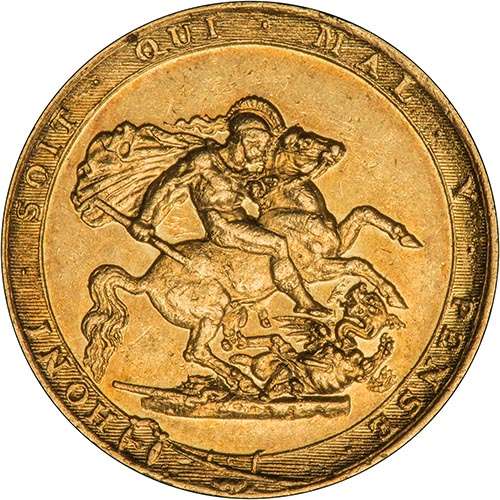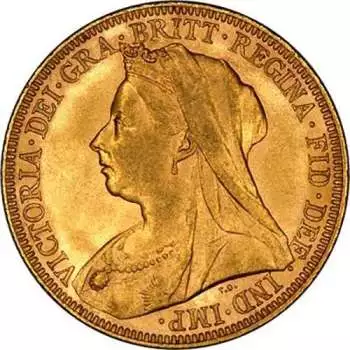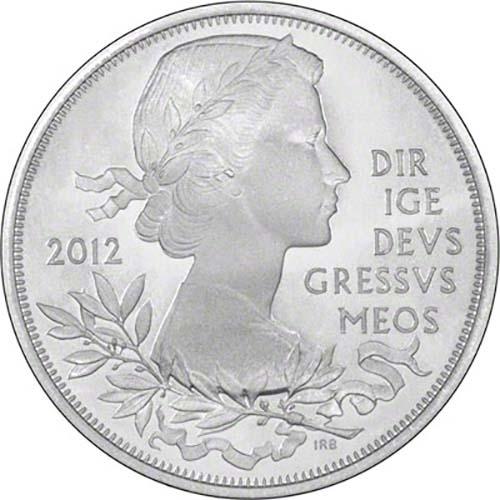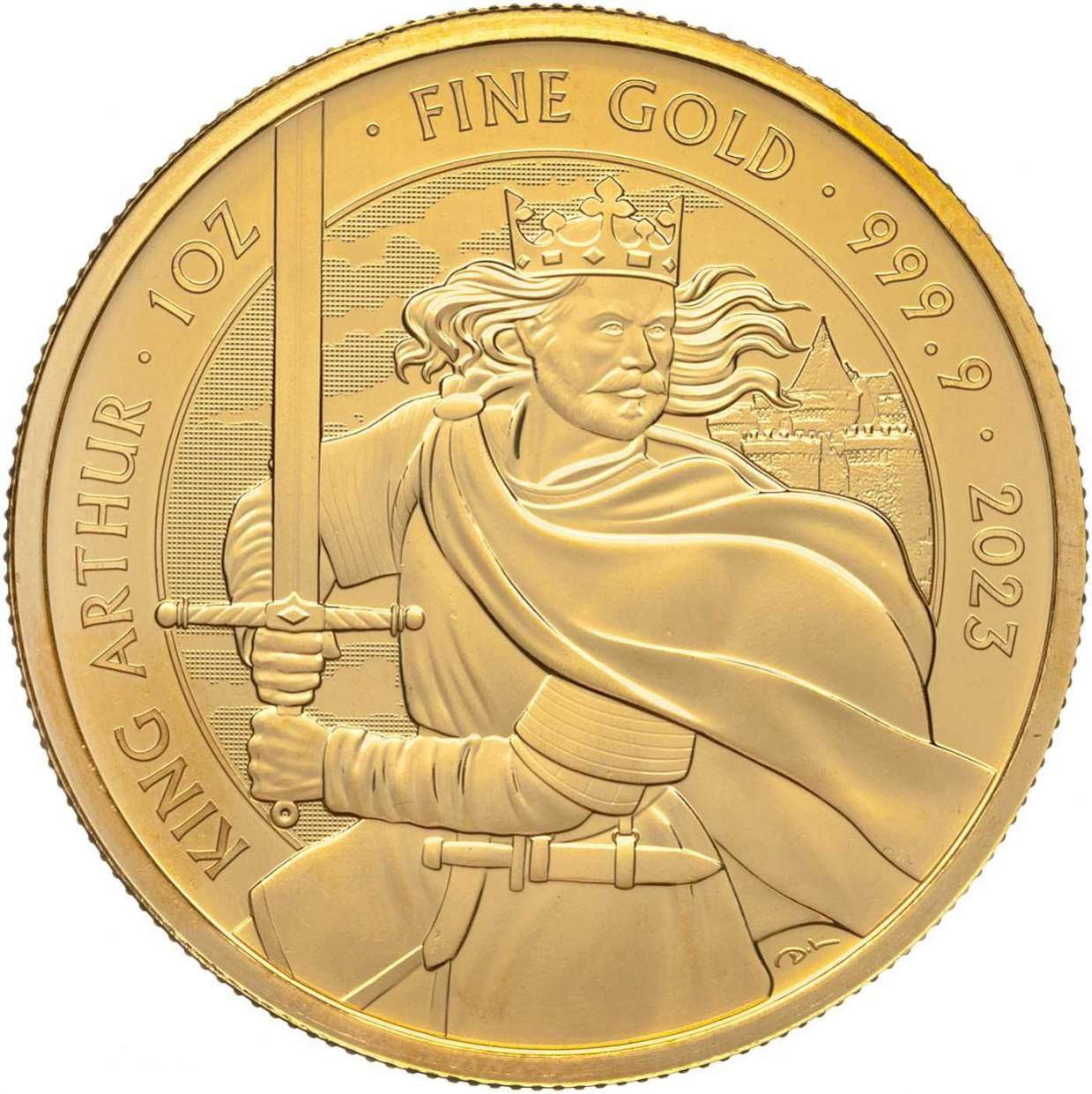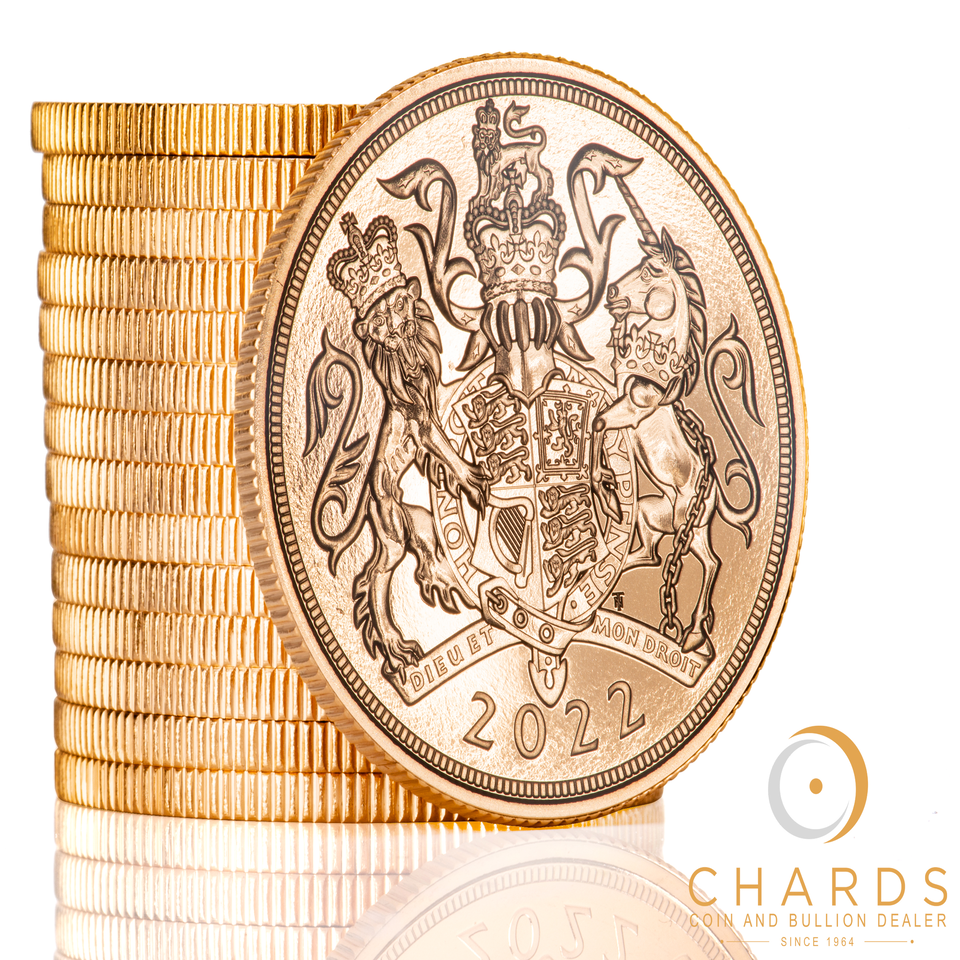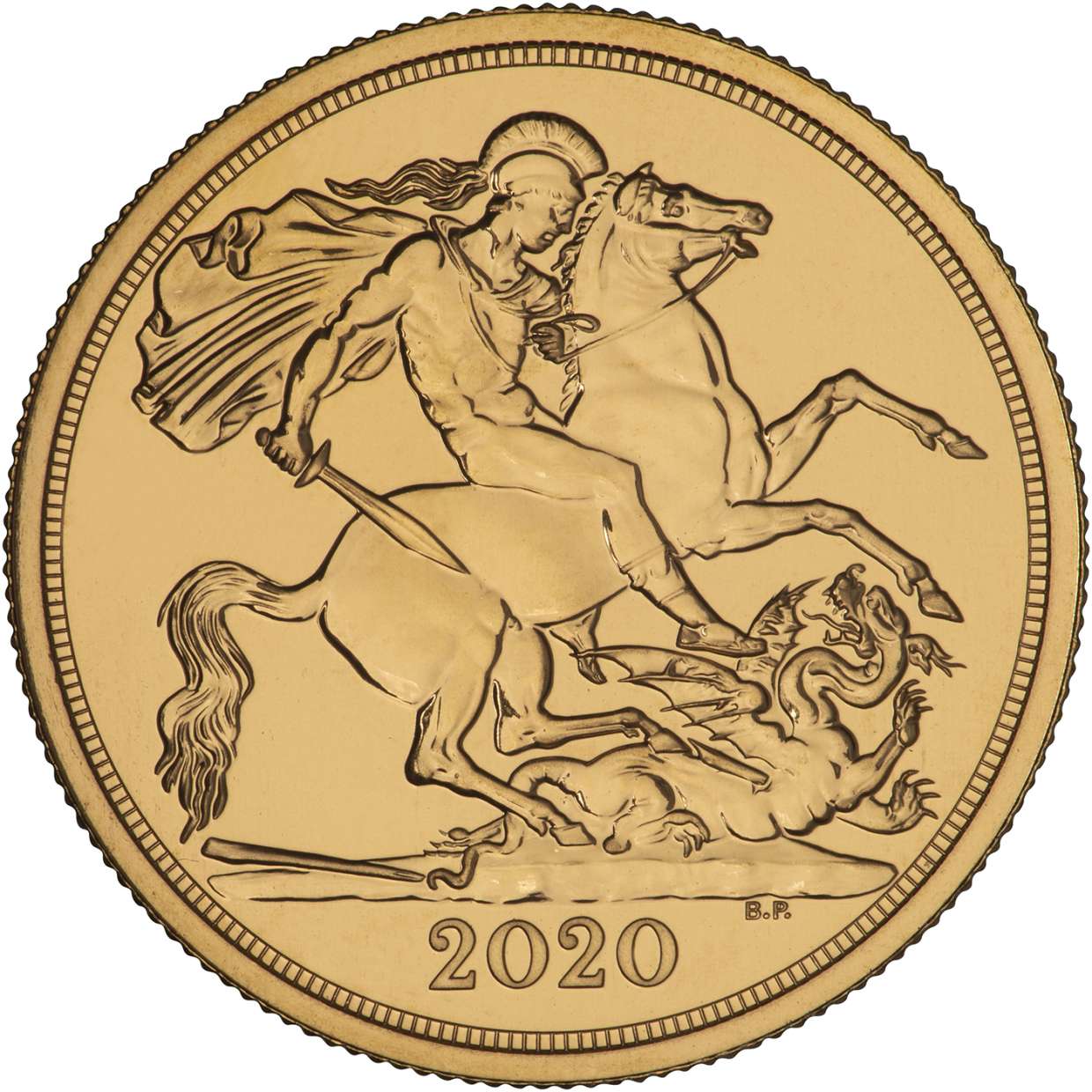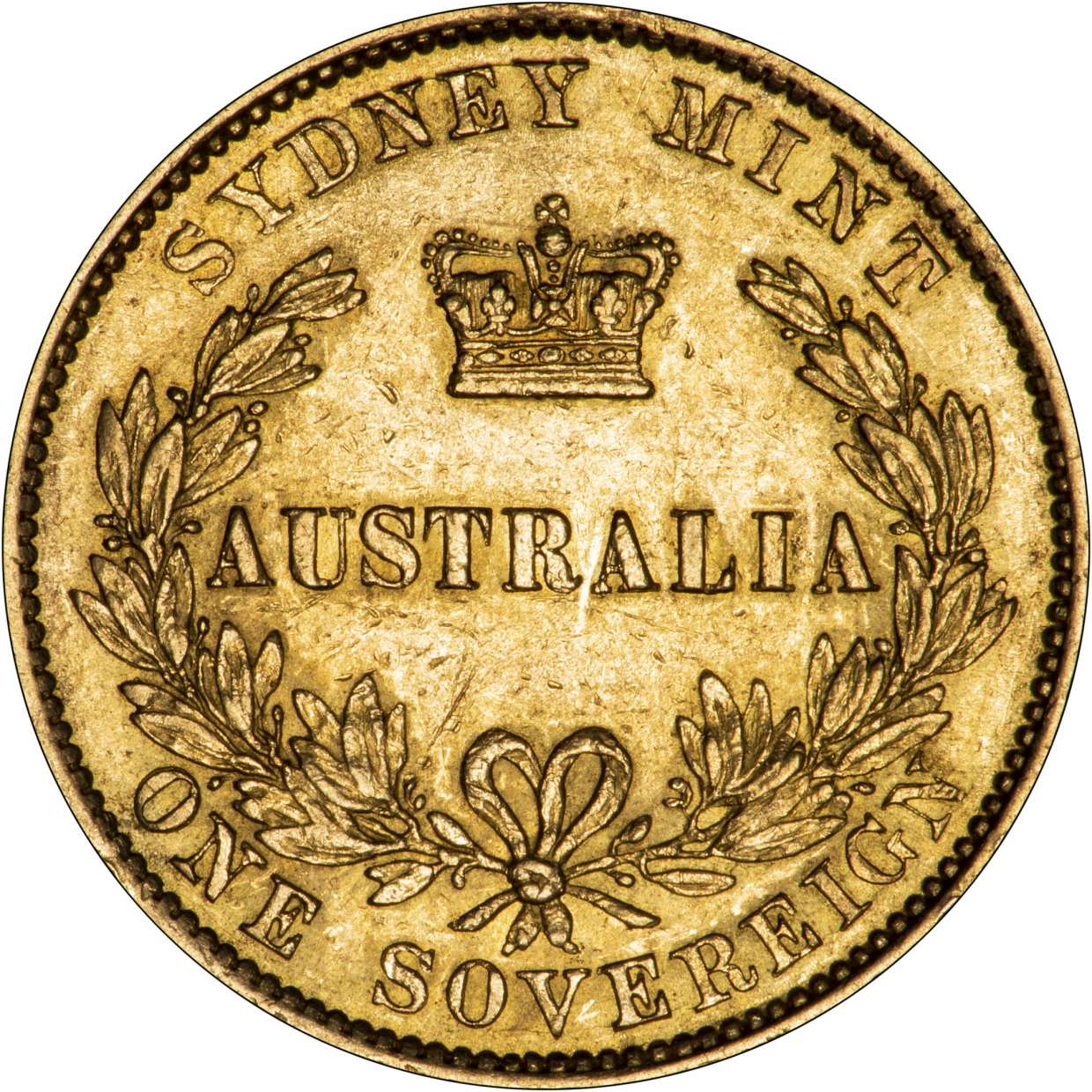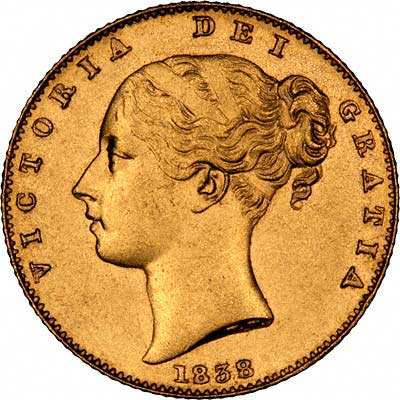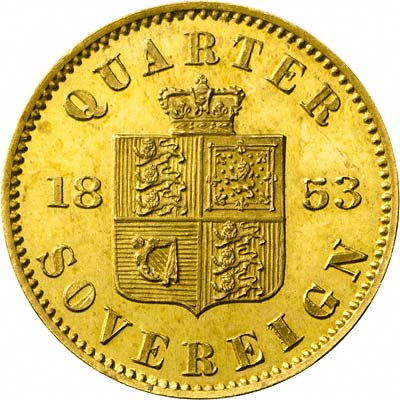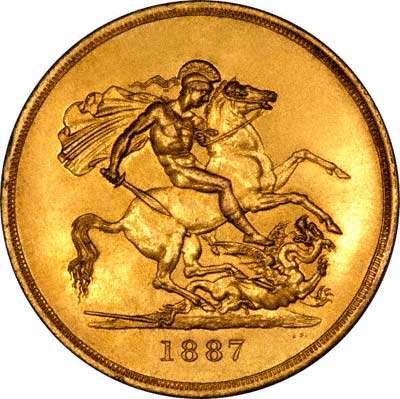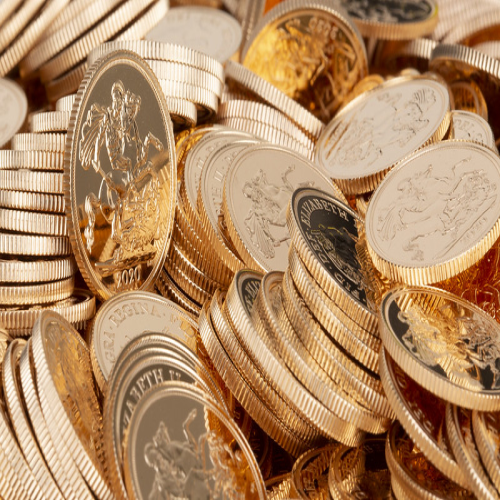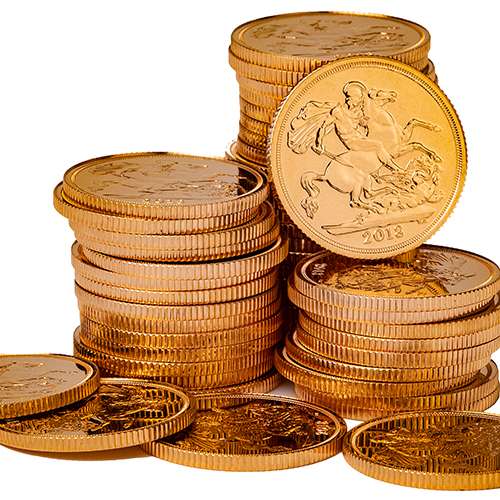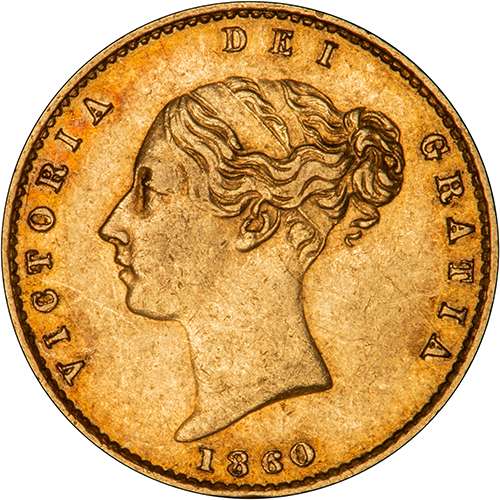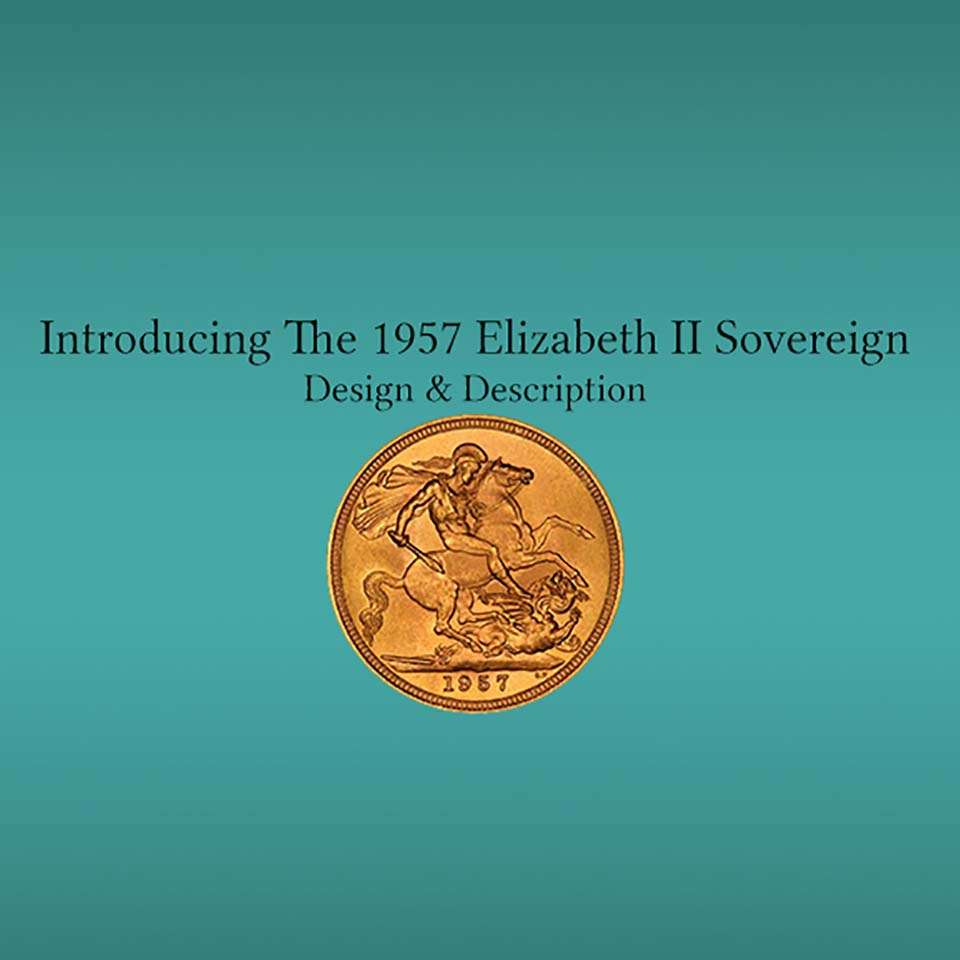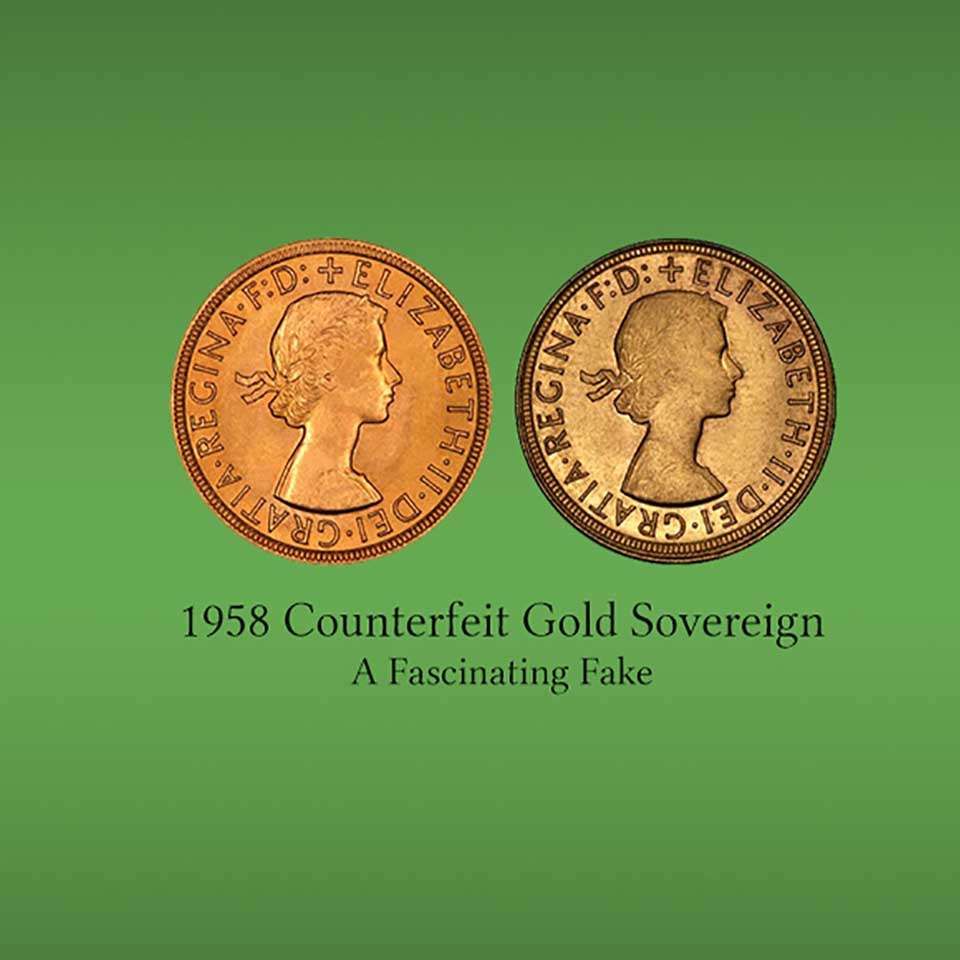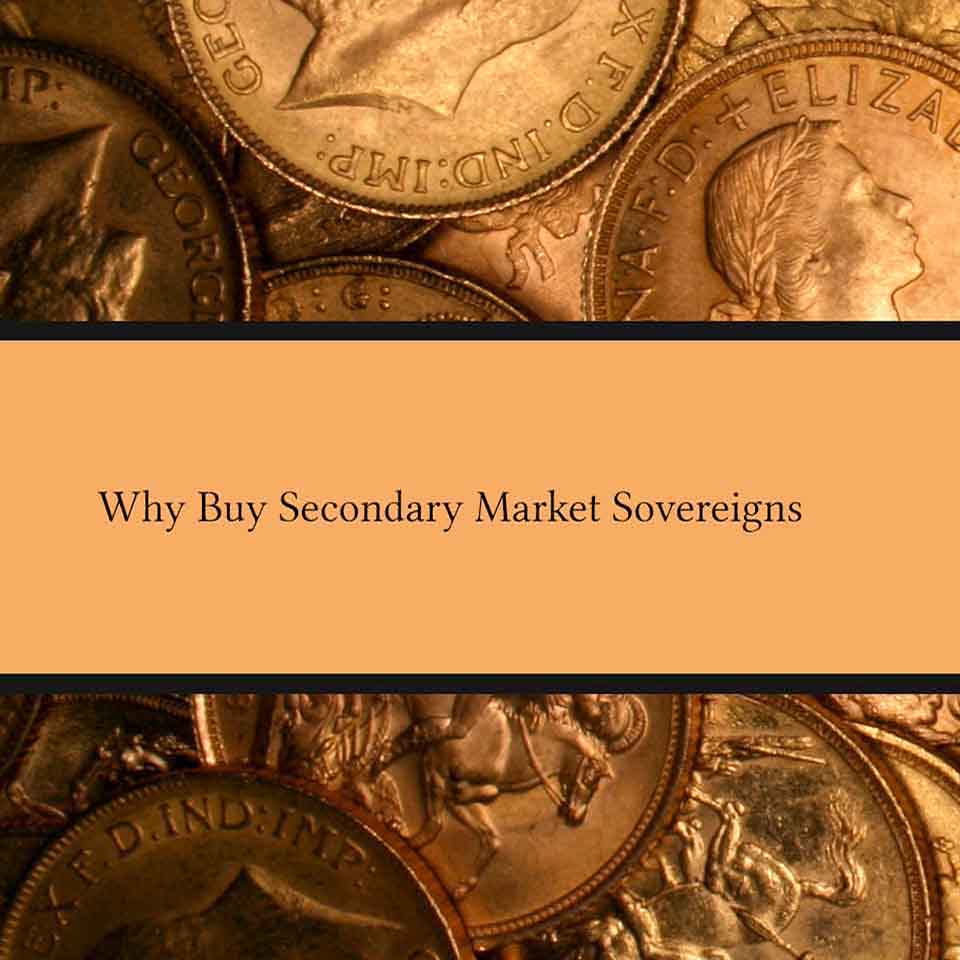Sovereign Definitions
Synopsis
If you have any confusion over the gold sovereign definition: A sovereign is a British gold coin, equal to one pound sterling, first struck in 1489 for Henry VII. Modern sovereigns, issued from 1817 to date weigh 7.98805 grams of 22 carat gold.
Dictionary Definitions of the Word "Sovereign"
Collins English Dictionary gives:--
- Noun.
A person exercising supreme authority, especially a monarch. - Noun.
A former English gold coin worth one pound sterling. - Adjective.
Supreme in rank or authority; a sovereign lord. - Adjective.
Excellent or outstanding;a sovereign remedy. - Adjective.
Of, relating to, or characteristic of a sovereign. - Adjective.
Independent of outside authority;a sovereign state.
Etymology: [C13; From Old French soverein, from Vulgar Latin superanus (unattested), from Latin super above, also influenced by REIGN]
Webster's International Encyclopedia gives:-
Sovereignty - Ultimate political power in a state. In political theory, debates on sovereignty center on the role of the sovereign and on the nature of supreme power - by what rights, and by whom, it should be wielded. A sovereign state is one that is independent of control by other states. The modern theory of sovereignty was developed by Jean Bodin and Thomas Hobbes (1756), who studied the sovereignty of monarchs. The extension of their thought has been applied to the modern state.
Gold One Pound Coin
Although a sovereign is a gold one pound coin, a gold pound coin is not necessarily a sovereign. A pound coin struck in gold was issued as part of the gold proof set issued for the Golden Jubilee in 2002. This is not a gold sovereign.
Multiples & Fractions
There also exist both fractional and multiple denominations, each of proportional weight, and the same gold fineness, as follows:
- Half Sovereign
A British gold coin, first issued in 1544 for Henry VIII. Modern half sovereigns have been issued since 1817. - Two Pounds or Double Sovereign
A British gold coin, first issued in about 1504 for Henry VII, Modern ones have been issued spasmodically since 1823 for George IV.
The Henry VII coins used the same dies as the sovereign, but were piedforts, being thicker and heavier. - Three Pounds or Treble Sovereign
A British gold coin, only issued in about 1504 for Henry VII, probably as presentation pieces. These used the same dies as the sovereign, but were piedforts, being thicker and heavier. - Five Pounds or Quintuple Sovereign
A British gold coin, first produced in 1820 for George III. - Quarter Sovereign
A British gold coin, first produced in 2009 for sale to collectors.
Nomenclature, Etymology & History
Sovereign
Title
The word sovereign was coined for the new coin because it was a large diameter, impressive coin, showing a powerful portrait of the king, seated majestically on his throne, produced so that Henry VII could demonstrate his power and influence, and that of his country, compared with his European counterparts. It was intended to symbolise Britain's increased power, influence and wealth, created under Henry's direction. The hammered gold sovereign was discontinued after about 1604, when it was superseded by a gold unite.
Two Pounds or Double Sovereign
Although it is likely that the Henry VII coins were called a double sovereign, these coins were never in general circulation. When the modern version was issued, we believe it was generally known and referred to as a two pound piece or two pound coin, rather than as a double sovereign. We consider double sovereign to be a romantic name for this coin, although we have conducted no hard historical research into this. Our conclusion is based mainly on our knowledge and experience in the numismatic and bullion markets from the early 1960's when this denomination was almost always referred to as a two pound. Anybody using the term double sovereign would be considered to be somewhat affected. In the twenty first century, the term double sovereign has grown in usage, and this certainly can be useful in distinguishing this denomination from the base metal two pound coins introduced in 1986, with precious metal collector versions, which are clearly not double sovereigns.
Three Pounds or Treble Sovereign
These are extremely rare, and we have never seen any evidence that these were referred to as three pound pieces or three pound coins, but as they never circulated, this is not surprising. As they were identical to sovereigns in every detail except their thickness and weight, one would expect them to be called triple (or treble) sovereigns.
Five Pounds or Quintuple Sovereign
To the best of our knowledge, these have always been referred to as five pound coins or five pound pieces, and never, until very recently, as quintuple sovereigns. In fact, the author of this page, Lawrence Chard, claims responsibility for coining this name for the denomination. This was done to help distinguish between gold proof versions of base metal crown coins. This only became necessary after the crown, which had always been tariffed as a five shilling coin, was re-tariffed as five pounds in 1990. With this 1990 commemorative issue, for the Queen Mother's 90th birthday, a gold proof version was also introduced. I believe it likely that the Royal Mint neglected to realise at the time, that this introduced potential confusion. As the collector coin market has developed strongly in recent years, and the number of collector, commemorative, and special issue coins has proliferated, so has the probability of confusion increased. This necessitated a concise way to communicate the difference between a "gold (proof) five pound crown" and a "gold non-crown five pound coin". It is not possible to differentiate on the basis of reverse design, as some sovereigns, notably 1989 and 2002 have design other than St. George and the dragon, as did some Victorian and earlier sovereigns. Neither is it possible to differentiate on the basis of crowns being commemorative coins, as crowns were once issued for circulation, and also the 1989 and 2002 sovereigns are commemorative issues. Although all gold five pound crowns have been proofs, it is possible that non-proof ones may be issued at some time in the future, and also proof versions of quintuple sovereigns have been issued. In about 2005, we came to the conclusion that the best way to differentiate between the two historically and dimensionally different five pound gold coins was to refer to the original type as a "quintuple sovereign", and the newer type as a "gold five pound crown".
Full Sovereign
This is the first mention on this page of "full sovereign". The expression makes us think there should be an "empty sovereign"! In normal usage, it is never necessary to use the term "full sovereign", as the single word sovereign suffices, and is clear and concise. We, and other, occasionally use it when referring to both sovereigns and half sovereigns in the same conversation, often with multiple occurrences of each term. In this case, it is sometimes helpful to prefix the word sovereign by the word full, so as to clarify that we are referring to a sovereign rather than a half sovereign. We have noticed that some people use the term "full sovereign" when the word "sovereign" would suffice, but we believe this is due to a failure to understand our point, a lack of familiarity with sovereigns, or a lack of concision in the use of language. We would not normally see any need to correct the user. We have on a small number of occasions, been asked whether a coin we were describing as a sovereign was a "full sovereign" or a "half sovereign". Our attitude and response to this question is that when we say a sovereign we mean what we say, i.e. a sovereign. If we intended to refer to a half sovereign, we would have specified an half sovereign, and we continue to believe this is how things should remain. We should note, however, that these queries have almost all been via eBay. While one may wonder why this should make no difference, we have observed that the average level of intelligence and education appears noticeably lower among eBay members than among our normal clientele or other internet users. We have also noted that a high proportion of eBay listings are poorly written, ambiguous, and misleading, often deliberately so in our estimation. Because of this, it sadly becomes sensible to add the unnecessary and therefore slightly tautological prefix full to the word sovereign, although we regard it as a retrograde step. To reinforce our views, we have never, yet, noted a single instance where the Royal Mint has deemed it necessary or desirable to refer to a "full sovereign". In all their published material which we have seen, they always refer to a sovereign as a sovereign.
Word Origin and History
According to Online Etymology Dictionary, © 2001 Douglas Harper: "c.1280, from O.Fr. soverain, from V.L. *superanus "chief, principal," from L. super "over" (see super-). Spelling influenced by folk-etymology association with reign. Milton spelled it sovran, as though from It. sovrano. Meaning "gold coin worth 22s 6d" first recorded 1490s; value changed 1817 to 1 pound." We do not necessarily agree with this, but will try to research it further.
OED The Oxford English English Dictionary
Includes the following: A gold coin minted in England from the time of Henry VII to Charles I, originally of the value of 22/6, but subsequently worth only 10s or 11 shillings. (see also half sovereigns) Royal Proclamation of 1st July 1817 "that certain pieces of gold money should be coined which should be called sovereigns or 20 shilling pieces".
Related Blog Articles
This guide and its content is copyright of Chard (1964) Ltd - © Chard (1964) Ltd 2024. All rights reserved. Any redistribution or reproduction of part or all of the contents in any form is prohibited.
We are not financial advisers and we would always recommend that you consult with one prior to making any investment decision.
You can read more about copyright or our advice disclaimer on these links.








